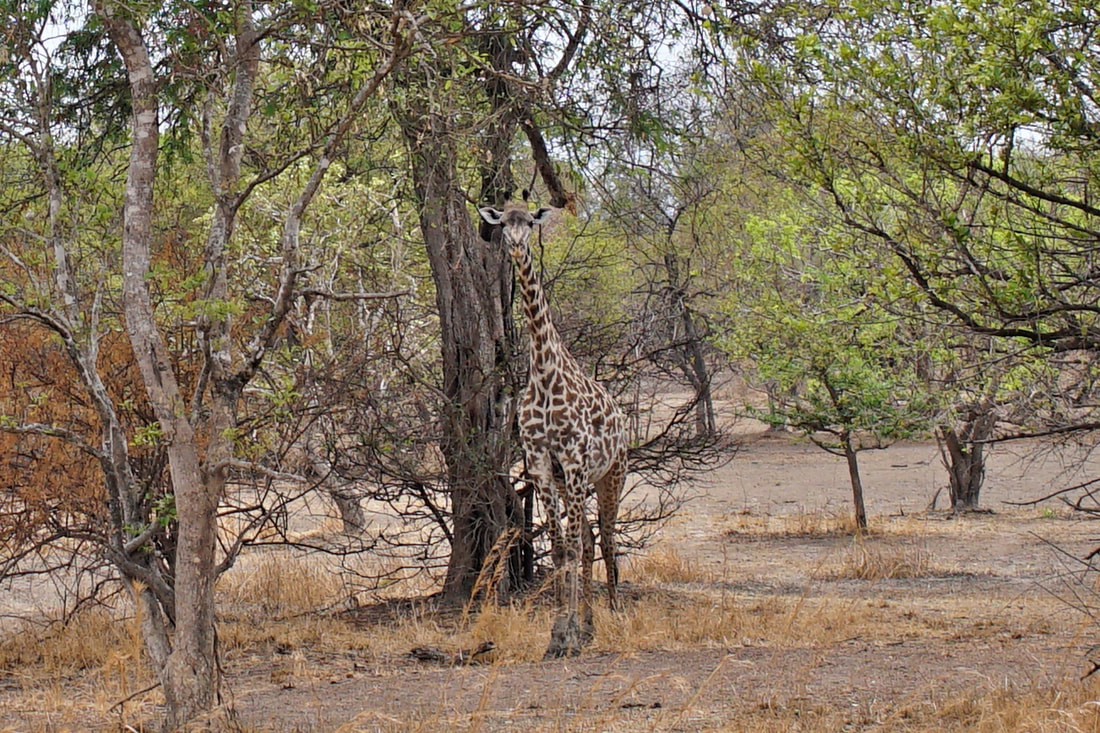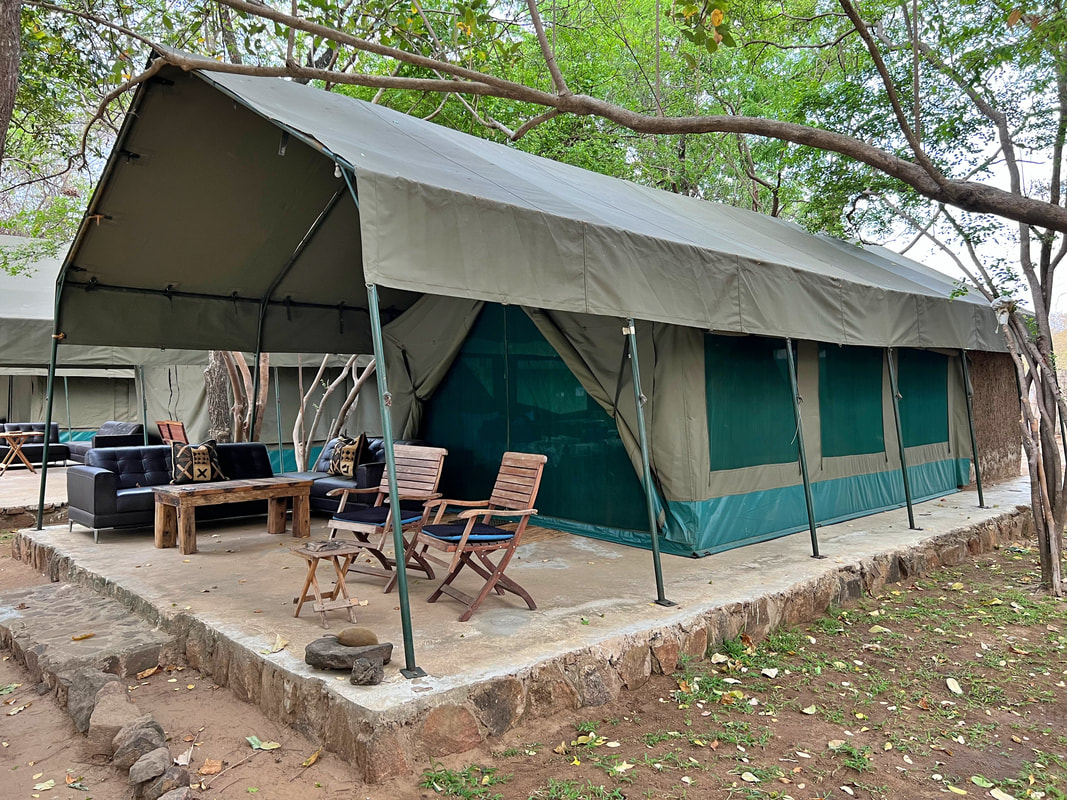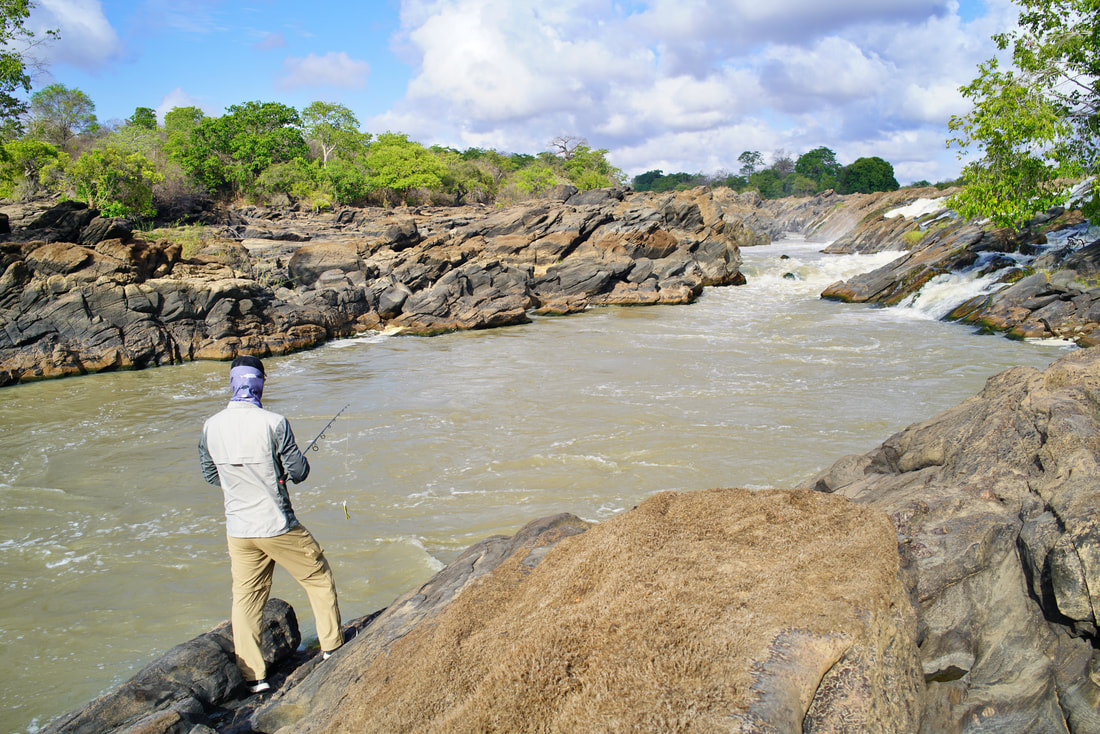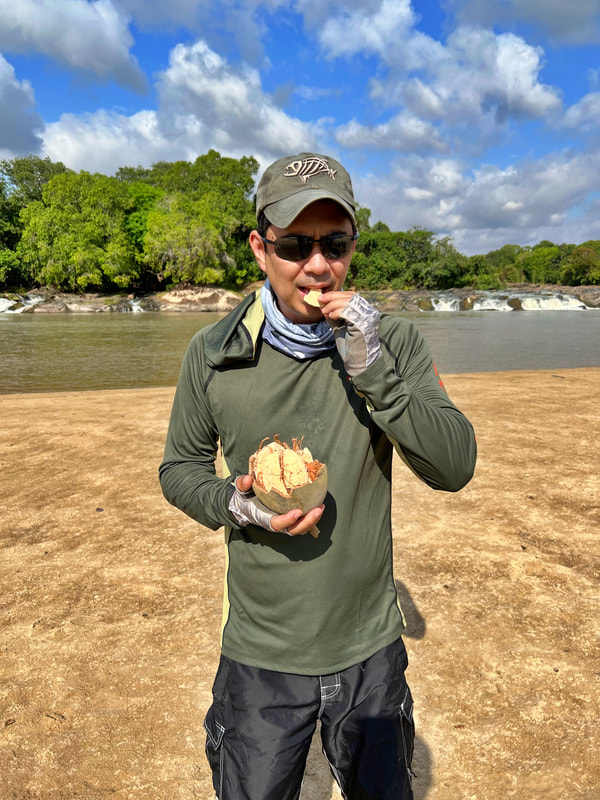Tanzania
November 2022
After flying from Houston to Atlanta to Amsterdam to Kilimanjaro to Dar Es Salaam, I needed a rest so I overnighted in Dar before heading to the bush. It was an 8 hour drive over fairly smooth roads until we reached the entrance to Nyerere National Park. Nyerere was only recently designated as a national park, and is the largest in Africa. Before that, it was a hunting concession, or at least the part I was in was. As a result, the animals are pretty skittish around humans. I saw plenty of animals, but nearly all of them ran away as we drove by. It was another 3.5 hour drive over bumpy unpaved road from the park entrance to the camp, and I didn’t see another soul the whole way. Below are a few animals I saw while driving around. I saw tons of things, but I didn’t bring my good (and very heavy) DSLR camera so it was almost impossible to get good shots, especially when they would run into the bush. Below are a baby Giraffe, some African Buffalo, and a Monitor Lizard. I was never excited to see Buffalo, because that always meant there would be Tsetse flies.
November 2022
After flying from Houston to Atlanta to Amsterdam to Kilimanjaro to Dar Es Salaam, I needed a rest so I overnighted in Dar before heading to the bush. It was an 8 hour drive over fairly smooth roads until we reached the entrance to Nyerere National Park. Nyerere was only recently designated as a national park, and is the largest in Africa. Before that, it was a hunting concession, or at least the part I was in was. As a result, the animals are pretty skittish around humans. I saw plenty of animals, but nearly all of them ran away as we drove by. It was another 3.5 hour drive over bumpy unpaved road from the park entrance to the camp, and I didn’t see another soul the whole way. Below are a few animals I saw while driving around. I saw tons of things, but I didn’t bring my good (and very heavy) DSLR camera so it was almost impossible to get good shots, especially when they would run into the bush. Below are a baby Giraffe, some African Buffalo, and a Monitor Lizard. I was never excited to see Buffalo, because that always meant there would be Tsetse flies.
The Tanzanian government is excited to promote sportfishing as a new tourist draw in the area, and so they assigned a park ranger to accompany me to camp and stay with me at all times to make sure nothing happened to me. I don’t think it was at all necessary, but it was interesting having a bodyguard for a week. It never hurts to have another set of eyes to look out for crocs out there either. He was a solemn fellow who took his job very seriously and never let go of the AK-47 he carried. I literally never saw him not touching it. Even when he put it down, he would lean it against his leg. They must have some very severe penalties if something happens to it. Thankfully he was good about keeping it pointed away from people. When we were out fishing, every time I looked at him, he would say in a very deep monotone voice “Keep trying sir. Don’t give up.” That always cracked me up. Below is a shot of him guarding me while fishing.
The fishing camp I went to was quite new, and they had only had three parties go there before me. It was well built with spacious tents that had ensuite bathrooms with full plumbing and hot and cold water. They even had some spotty internet. It was run by Majestic Rivers (www.majesticrivers.com) and I highly recommend it. There were no mosquitoes, so I didn’t have to slather myself in Deet all the time. Away from camp there were occasionally Tsetse flies, which I absolutely hate. They look like large regular house flies but they are brown and have a mean bite. Even denim does not stop them. Their bodies are surprisingly durable and I watched many a fly get up and fly off from a swat against a window that would have killed three normal flies. Thankfully they were in limited areas and not really around camp or the fishing spots. Below are a few shots from camp: my tent, the first sunrise, and one of the resident Hippos.
I was actually the only guest that week, so I had the whole camp and its staff of 12 to myself. Since I was the only one there, the staff were constantly offering me things like cold juice or a snack every time I turned around, and they seemed very pleased whenever I accepted something. My main hosts were the two fishing guides. One was an older guy from South Africa who had run fishing camps in many places in Africa including Botswana and Gabon. He had lots of great stories, including how one of his clients attempted to hire him to murder another client and got put in jail for it. The other guide was a younger Scottish guy who was one of the more international people I have met. Both guides were great to be around and very good at guiding for Tigerfish.
It became obvious on the first day that one species that would not be running away from us was the Hippo. Because it was the end of the dry season and the water was really low, they were congregated in the remaining deeper pools. Those same pools are often exactly where you want to fish for Tigerfish, so we had to try to reason with the Hippos a lot. Most of the time a couple of them would come closer to look at us out of curiosity, and then go back to doing Hippo things like fighting or making lots of snorts and grunts and other noises. Sometimes a bull Hippo would take exception to our being there and confront us. Most of the time if we stood our ground he would just look grumpy for a while and then go back to doing his thing. However, occasionally a bull would move towards us in a threatening manner and make it clear he was not going to back down, so we would retreat and go fish somewhere else. Hippos are built like tanks and you certainly don’t want to mess with them. When evening came they would get out of the water to feed, and you definitely didn’t want to be blocking their preferred path. Thankfully they are herbivores so you don’t have to worry about them trying to eat you. You just have to stay out of their way. There were a ton of Hippos near the camp and at night they would come right into camp to feed. One night I woke up and saw one right at the entrance to my tent. They are just there to eat the grass though, and ignore you if you sit in your tent and keep quiet. Below is a shot of me fishing while a pod of Hippos watched. On several occasions they got much closer than this.
All fishing, with the exception of part of the first day, was done from shore. It involved quite a bit of hiking and climbing over rocks to reach open spots where I could cast. The guides were very pleased that I was fit enough to do a lot of hiking and climbing in the heat, because that opened up a lot more possible spots. When fishing from shore, I had to be careful about Crocs. Although they were shy and did not show themselves much (they previously had been hunted), they were still dangerous and you always had to keep a healthy distance from any deep or murky water where they could ambush you. Here are some shots of some of the places I fished.
Tigerfish are extremely hard to hook and land and it took me a while to figure them out. They have mouths like concrete and hit lures so hard it always takes you by surprise. After fishing hard the first four days, I had only landed 2, although I did get some other interesting species. Here are the first two Tigers along with some of the other species: Yellowfish, Vundu Catfish, Kitoga Catfish. Yellowfish are one of the prettiest freshwater fish I have seen. The catfish there are very aggressive and hit lures meant for Tigerfish.
The last two days, the bite improved and I got better at capitalizing and I was able to land a whopping 15 and 16 Tigerfish those days. So for the week I landed 33, and 31 of those were in the last two days. Spoons caught the most fish for me, and I got a lot of bites on plastic frogs on a jighead. Unfortunately, they bit the legs off most of the time. The biggest one was 15.5lbs, which is not a monster for Tanzania but is a really nice size there and huge for anywhere else besides the Congo. It actually didn't look quite that big to me, but the guide did weigh it. I even tried flyfishing for them and got 5 that way. It would have been an interesting trip without the last two days, but with the last two days it was epic. Below is the biggest Tigerfish. What a way to end the trip. Every Tigerfish you actually land is special.
A couple more misc photos. The first is me trying the fruit of a baobob tree. It will keep you alive if you get lost in the bush, but I can see why you don’t see it in stores. The second is a Hippo skull. You can see the size of their teeth. The last photo is of me releasing the Tigerfish. Since it is a national park and they want to promote conservation, all fish were handled gently and released.





















